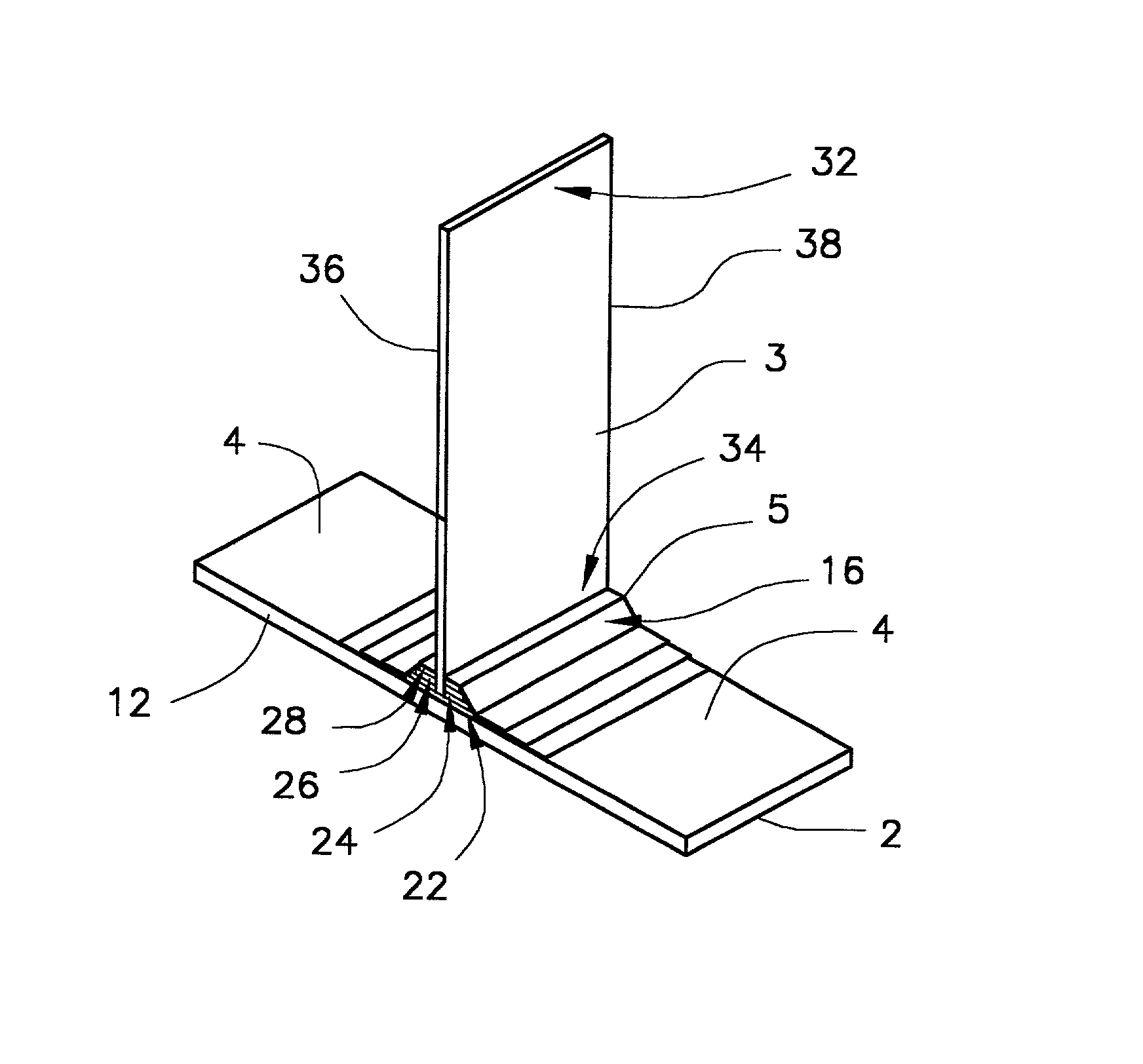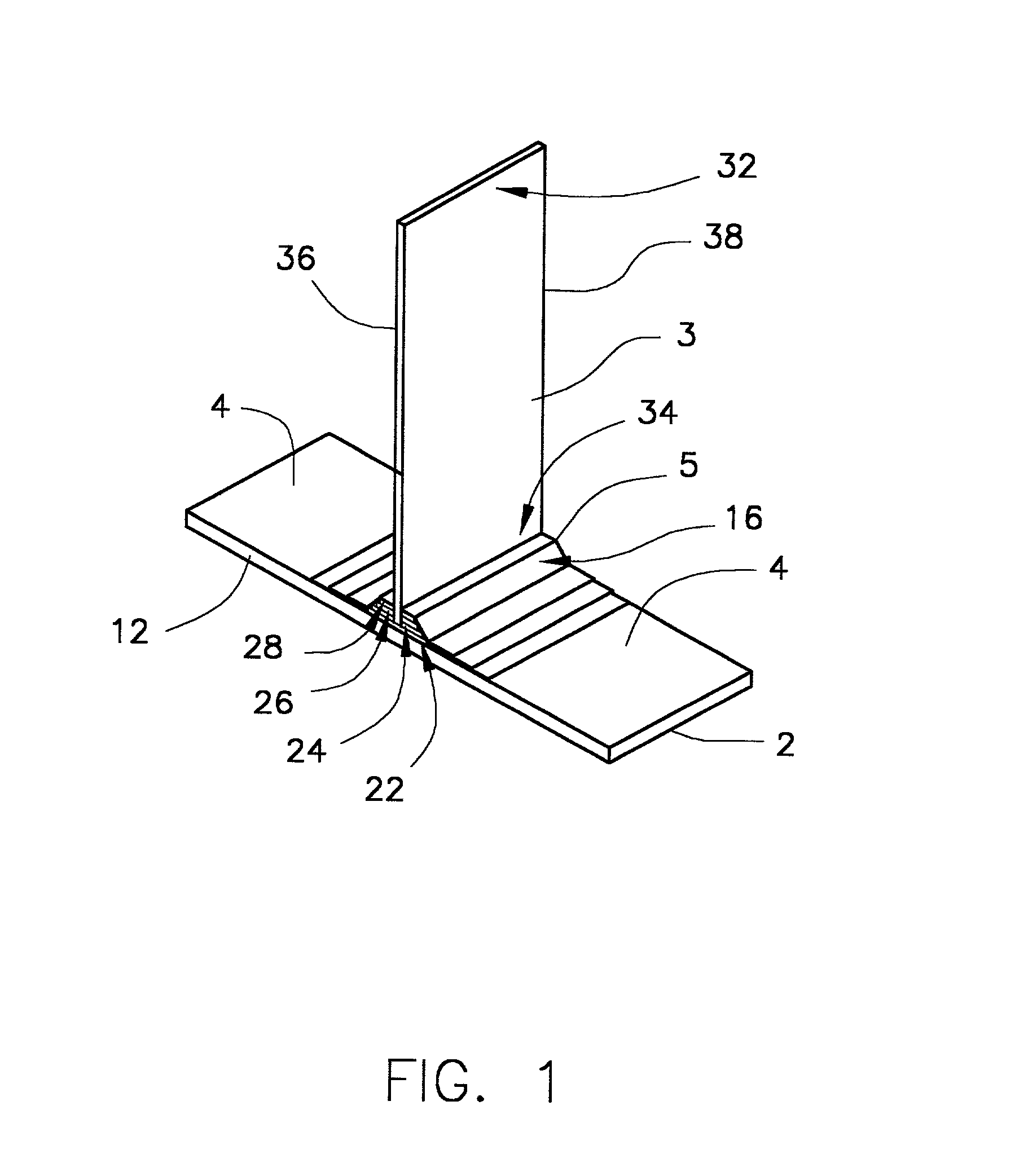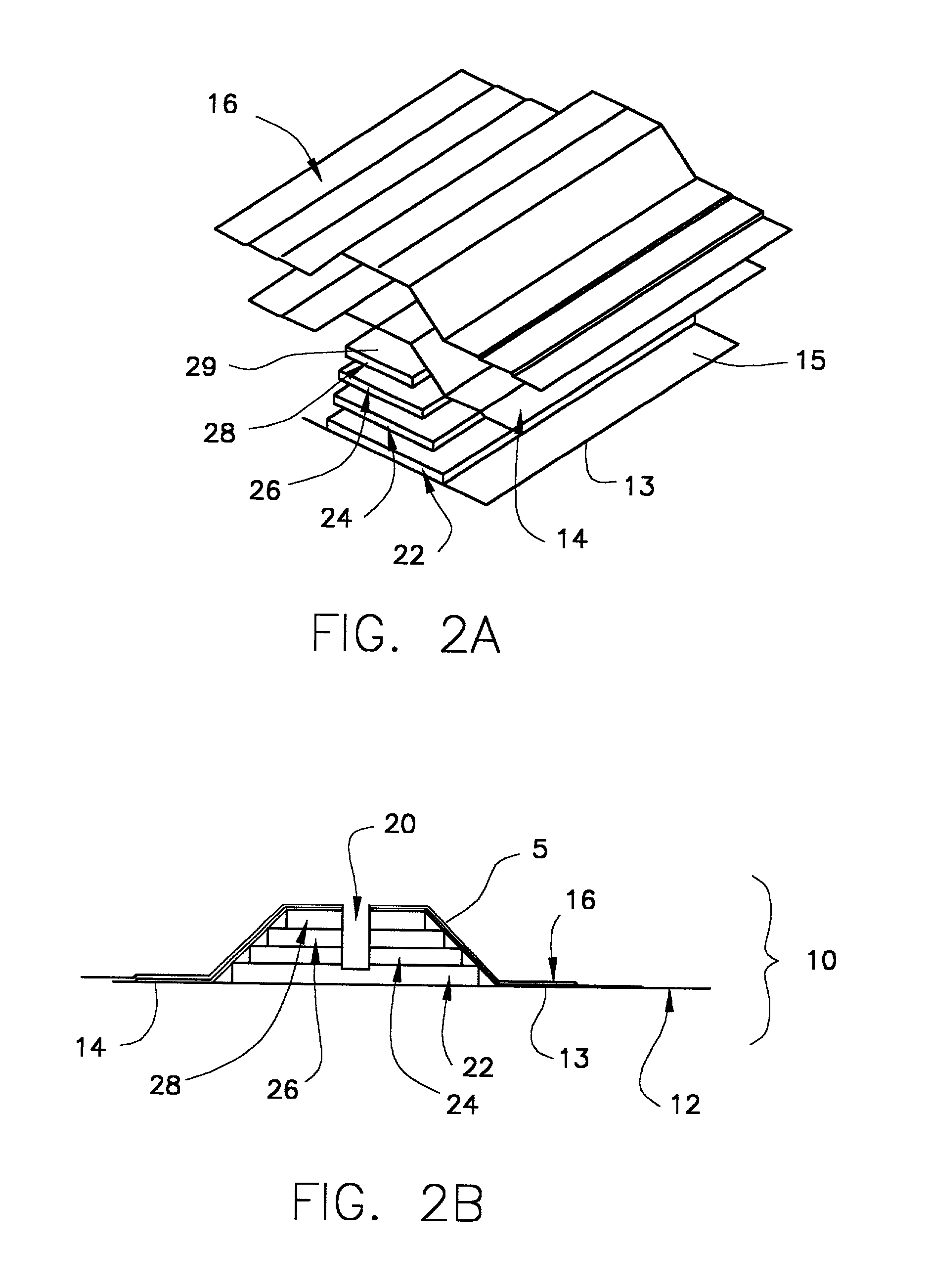Structural element with rib-receiving member
a technology of ribs and components, applied in the field of structural elements, can solve the problems of high cost of use of honeycomb materials, high maintenance and repair costs, and high cost of life cycle, and achieve the effects of reducing the number of parts, and eliminating extensive assembly tooling
- Summary
- Abstract
- Description
- Claims
- Application Information
AI Technical Summary
Benefits of technology
Problems solved by technology
Method used
Image
Examples
Embodiment Construction
[0057]Various embodiments of this invention are illustrated by reference to FIGS. 1-4 herein. FIG. 1 shows the assembled structural element of this invention, which comprises: a first member or face sheet 12 having an inner surface 4 and an outer surface 2; a rib-receiving member 5; and a rib member 3 having a first end 34, a second end 32, a first edge 36 and a second edge 38. The first member may be, for example, a face sheet which is employed in an aerospace structure such as an aircraft wing or an internal aerospace structure such as a strut or the like. The first member may be fabricated from metal or a composite material, but is preferably fabricated from a composite material, as is further described herein. A second member (not shown) which is similar to the first member may receive second end 32 of rib member 3 using a second rib-receiving member, as shown, for example, in FIGS. 4A and 4B. Rib-receiving member 5 comprises at least one cover sheet 16 which has an engagement o...
PUM
| Property | Measurement | Unit |
|---|---|---|
| pressure | aaaaa | aaaaa |
| temperatures | aaaaa | aaaaa |
| pressures | aaaaa | aaaaa |
Abstract
Description
Claims
Application Information
 Login to View More
Login to View More - R&D
- Intellectual Property
- Life Sciences
- Materials
- Tech Scout
- Unparalleled Data Quality
- Higher Quality Content
- 60% Fewer Hallucinations
Browse by: Latest US Patents, China's latest patents, Technical Efficacy Thesaurus, Application Domain, Technology Topic, Popular Technical Reports.
© 2025 PatSnap. All rights reserved.Legal|Privacy policy|Modern Slavery Act Transparency Statement|Sitemap|About US| Contact US: help@patsnap.com



